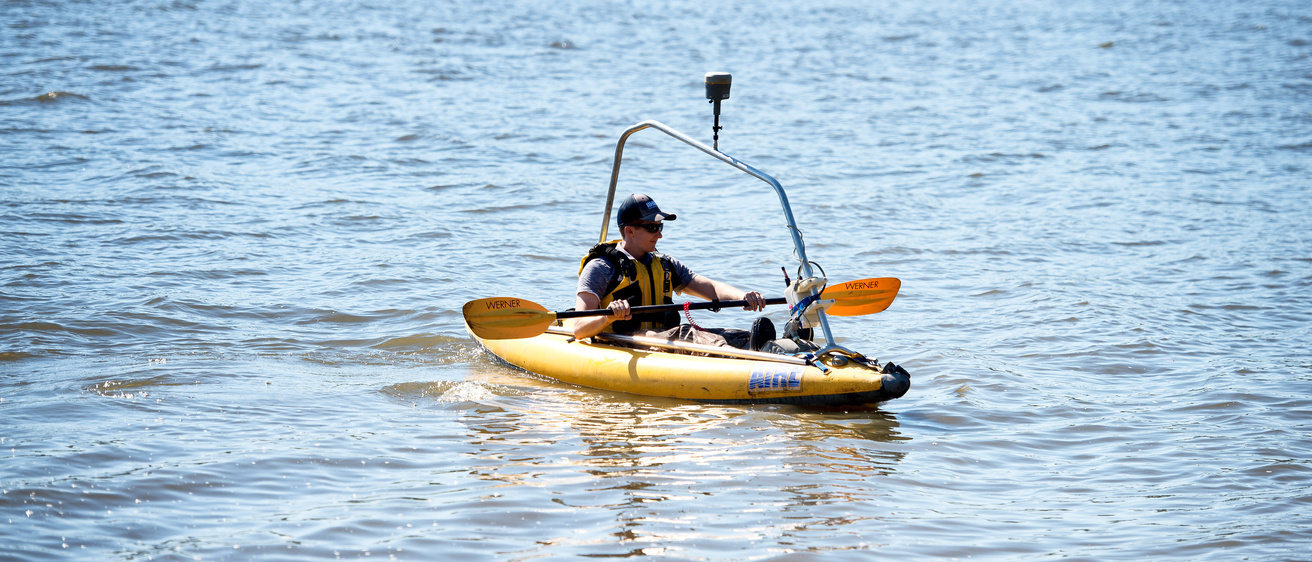Lucille A. Carver Mississippi Riverside Environmental Research Station (LACMRERS)
IIHR’s LACMRERS is a unique research facility on the Upper Mississippi River near Muscatine, providing space for in-depth study and education. Made possible by a generous gift from the Carver Foundation, LACMRERS offers well-equipped laboratory spaces and research vessels.
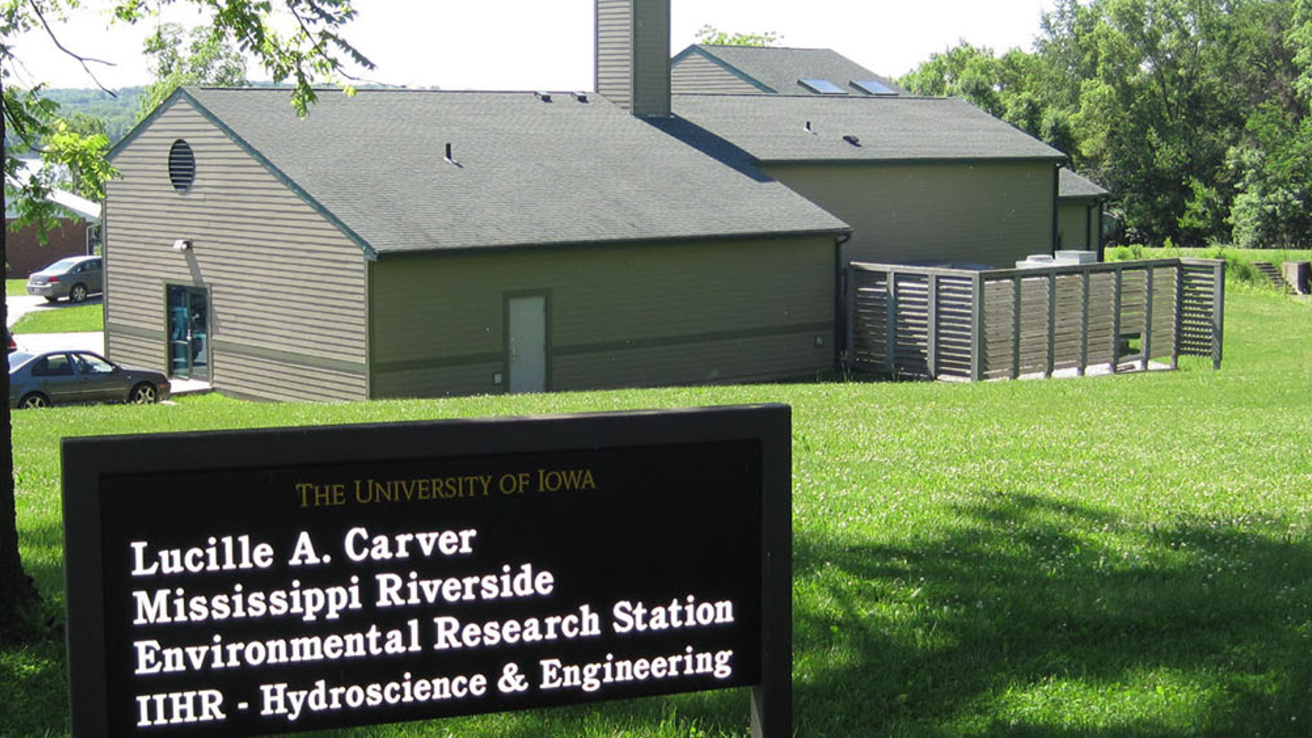
Supporting Research on the Mississippi River

University of Iowa expands research on the Mississippi River
Did You Know?
- LACMRERS offers educational opportunities for students in engineering, biology, English, and more
- Each summer, LACMRERS hosts a water-quality class, which gives students plenty of fieldwork time on the Mississippi River
- Short courses for international students and STEM festivals (Science, Technology, Engineering, and Math) draw hundreds of K-12 students to LACMRERS
- LACMRERS research staff have developed manuals on modeling tools that educators can use in the classroom
Laboratories & Equipment
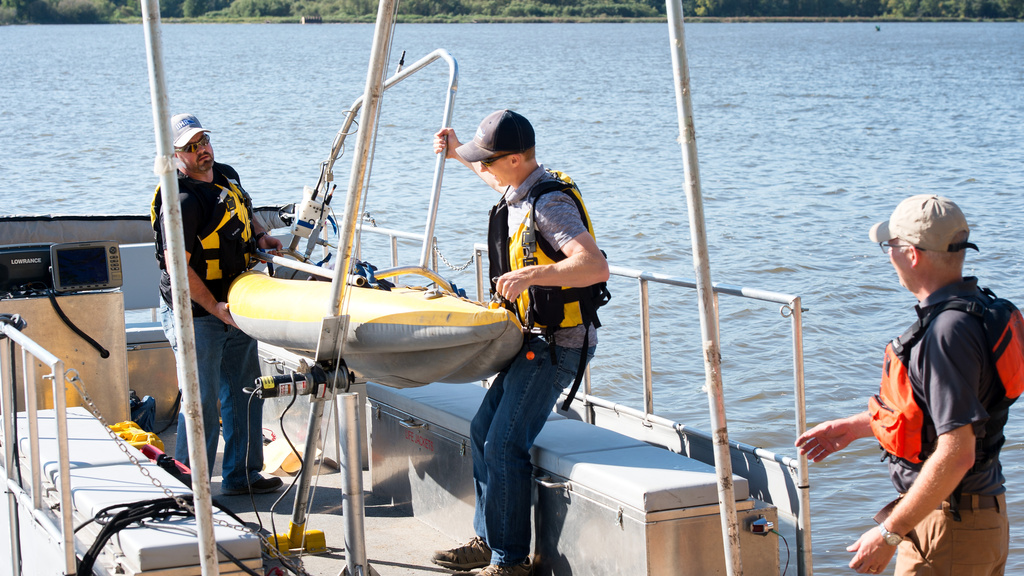
Field Equipment
LACMRERS is equipped with an array of research vessels and sampling and monitoring equipment for biological and chemical research:
- Nets and waders
- Alkalinity kits
- Multiprobes
- River samplers (for parts-per-billion analysis) and autosamplers
- A Fultz groundwater pump system
- Teflon samplers
- Churn splitters
- Filters and bottles
- YSI multiprobes (for dissolved oxygen, temperature, pH, and SpC)
- Nitrate and turbidity sensors
- Three self-contained underwater field fluorometers
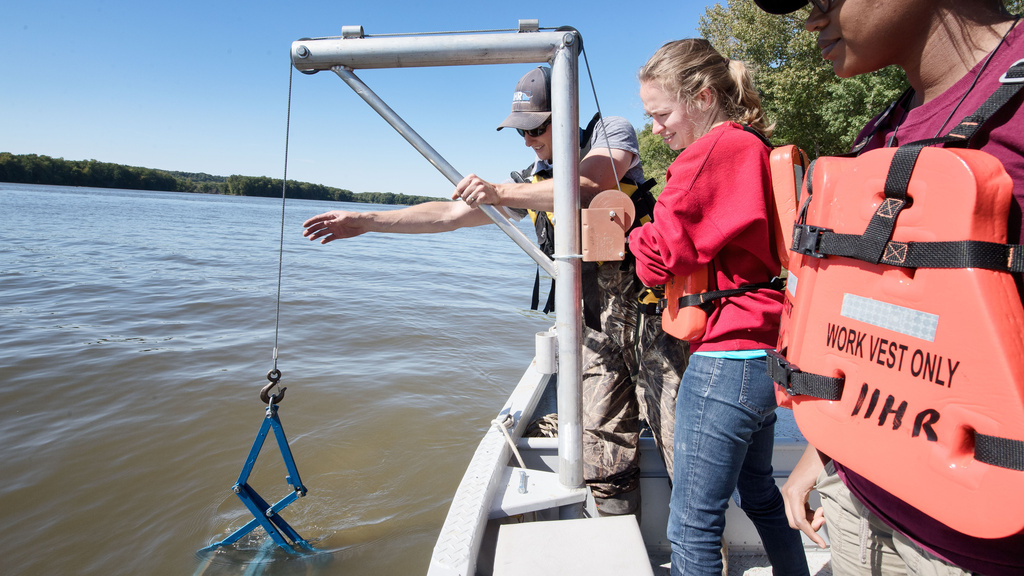
Sediment & Water Quality
Sediment:
- A Sedigraph III x-ray analysis machine
- An Ankermid particle size analyzer
- A gamma source radionucleotide tracer/spectroscopy system to reveal where sediments originated
Water Quality: Mississippi River water pumped directly into the lab can be sampled and analyzed in real time.
- A Turner lab and field fluormeter, with lab spectrometer, allow algal research and rapid water assays.
- IDEXX rapid bacteria system can test for waterborne pathogens, such as E-coli and fecal bacteria.
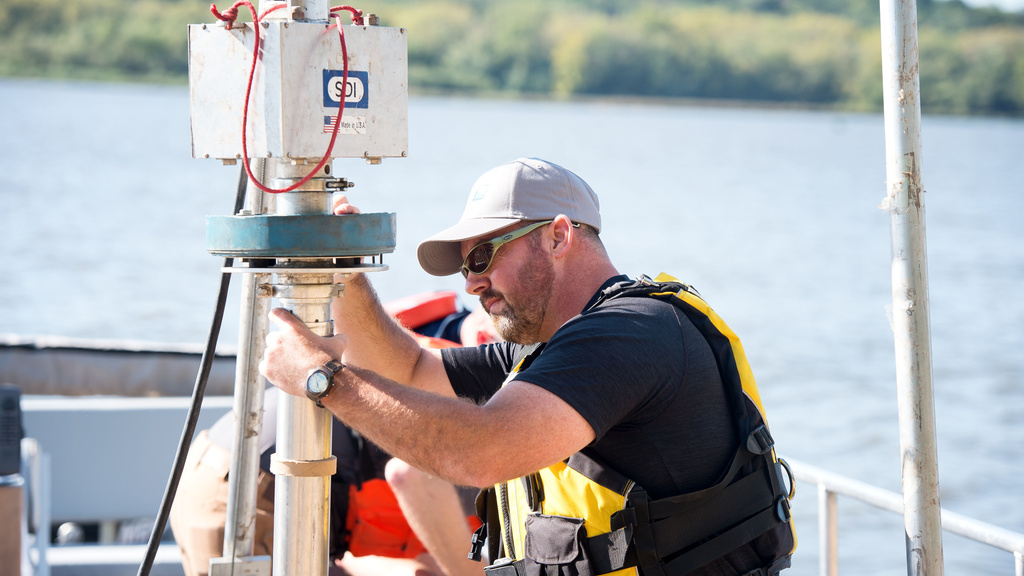
Coring & Bathymetry
Coring: Vibracore coring equipment can collect core samples of underwater sediments, used for a variety of research projects:
- Grain size and shape analysis
- Depositional history
- Compaction of sediments for structures
- Sediment composition
Bathymetry:
IIHR’s multibeam echo sounder collects data resulting in a 3-D map of the river bottom for research, including:
- Analysis of river management on corridors and watersheds
- Documentation of habitat characteristics
- Evaluation of scour around structures
